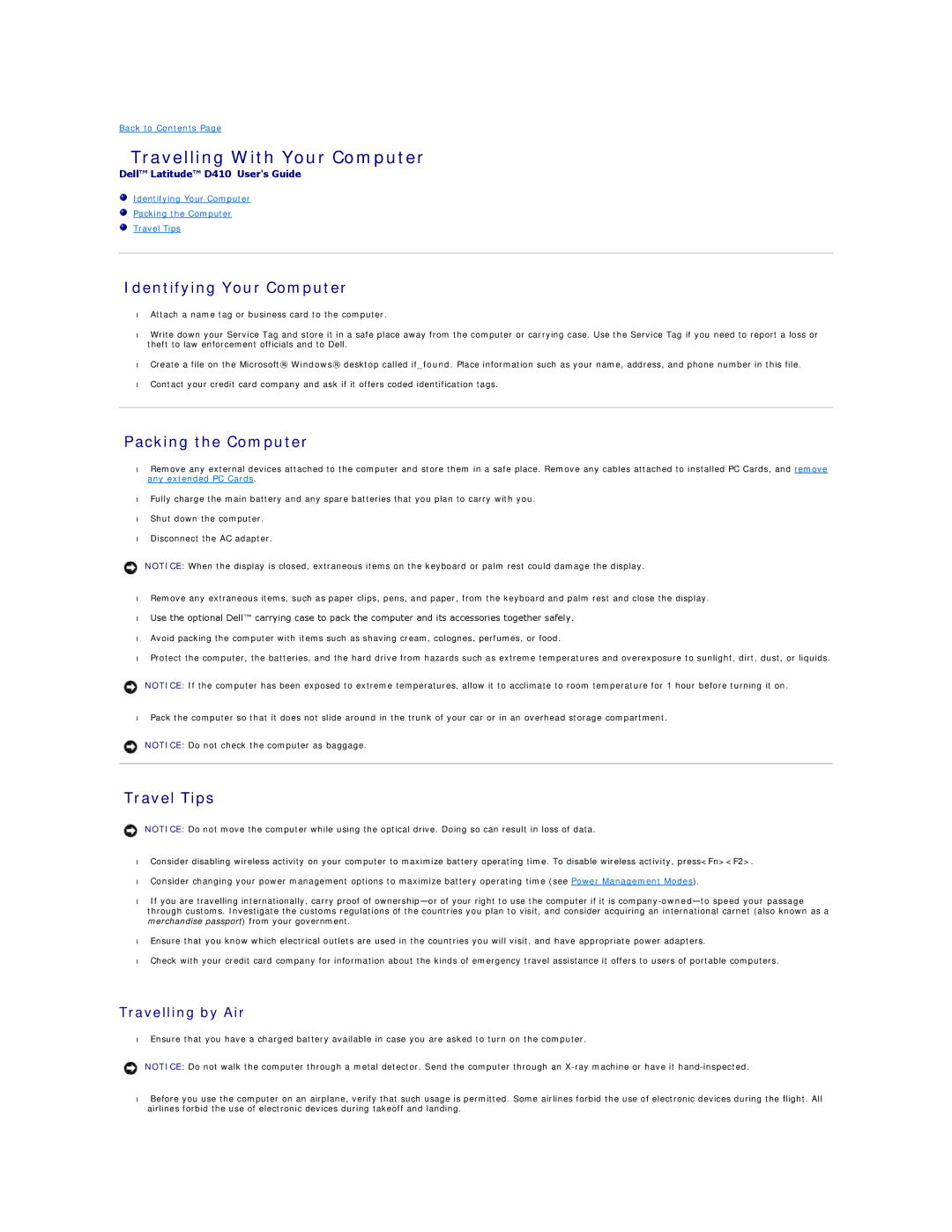
Back to Contents Page
Travelling With Your Computer
Dell™ Latitude™ D410 User's Guide
Identifying Your Computer
Packing the Computer
Travel Tips
Identifying Your Computer
•Attach a name tag or business card to the computer.
•Write down your Service Tag and store it in a safe place away from the computer or carrying case. Use the Service Tag if you need to report a loss or theft to law enforcement officials and to Dell.
•Create a file on the Microsoft® Windows® desktop called if_found. Place information such as your name, address, and phone number in this file.
•Contact your credit card company and ask if it offers coded identification tags.
Packing the Computer
•Remove any external devices attached to the computer and store them in a safe place. Remove any cables attached to installed PC Cards, and remove any extended PC Cards.
•Fully charge the main battery and any spare batteries that you plan to carry with you.
•Shut down the computer.
•Disconnect the AC adapter.
NOTICE: When the display is closed, extraneous items on the keyboard or palm rest could damage the display.
•Remove any extraneous items, such as paper clips, pens, and paper, from the keyboard and palm rest and close the display.
•Use the optional Dell™ carrying case to pack the computer and its accessories together safely.
•Avoid packing the computer with items such as shaving cream, colognes, perfumes, or food.
•Protect the computer, the batteries, and the hard drive from hazards such as extreme temperatures and overexposure to sunlight, dirt, dust, or liquids.
NOTICE: If the computer has been exposed to extreme temperatures, allow it to acclimate to room temperature for 1 hour before turning it on.
•Pack the computer so that it does not slide around in the trunk of your car or in an overhead storage compartment.
NOTICE: Do not check the computer as baggage.
Travel Tips
NOTICE: Do not move the computer while using the optical drive. Doing so can result in loss of data.
•Consider disabling wireless activity on your computer to maximize battery operating time. To disable wireless activity, press<Fn><F2>.
•Consider changing your power management options to maximize battery operating time (see Power Management Modes).
•If you are travelling internationally, carry proof of
•Ensure that you know which electrical outlets are used in the countries you will visit, and have appropriate power adapters.
•Check with your credit card company for information about the kinds of emergency travel assistance it offers to users of portable computers.
Travelling by Air
•Ensure that you have a charged battery available in case you are asked to turn on the computer.
NOTICE: Do not walk the computer through a metal detector. Send the computer through an
•Before you use the computer on an airplane, verify that such usage is permitted. Some airlines forbid the use of electronic devices during the flight. All airlines forbid the use of electronic devices during takeoff and landing.
